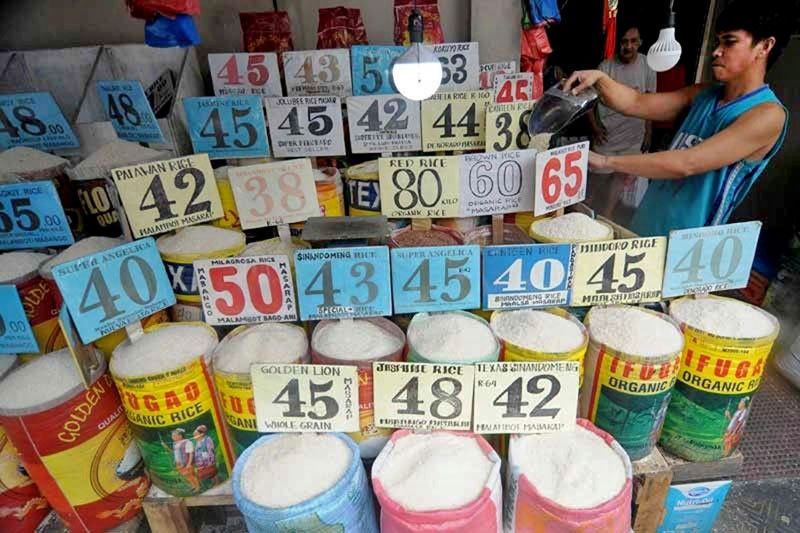Decline in rice prices continues

MANILA, Philippines — Prices of Filipinos’ main staple continued to be on the downward trend with consumers saving more and farmers earning less following the influx of imported rice.
Latest data from the Philippine Statistics Authority (PSA) showed consistent lower prices for more than nine months after the Philippines opened its rice industry to more private sector imports.
In its regular update on palay, rice and corn prices, PSA said the average wholesale price of well-milled rice was P37.20 per kilogram as of the end of November.
This represented a 12 percent drop from the P42.42 per kilo a year ago and 0.3 percent below on a weekly basis.
Its average retail price also decreased by 9.5 percent to P41.58 per kilo.
The wholesale price of regular-milled rice declined by 15 percent to P33.17 per kilo while the average retail price was P36.66 a kilo.
While consumers are benefitting from the opening up of the market, local farmers are suffering from declining palay farm gate prices.
The average farm gate price of palay is nowhere near recovery at P15.55, down by 0.1 percent on a weekly basis.
The current price is 22.3 percent lower than the P20.01 per kilo last year.
It is also lower than the P19.40 per kilo last March when the rice tariffication law took effect.
The lower farm gate price was exacerbated by imports that flooded the commercial market.
Total rice inventory stood at 2.96 million metric tons (MT) as of the end of November, 1.3 percent lower than last year’s volume of three million MT.
However, this is higher by 30 percent from the 2.28 million MT the previous month.
Under the Rice Tariffication Law, quantitative restrictions on rice importation are lifted and private traders are allowed to import the commodity from countries of their choice.
The law replaced the government’s quantitative restrictions on importation of the staple with a 35 percent tariff.
The measure also created the Rice Competitiveness Enhancement Fund or a special rice buffer fund, with an initial P10-billion annual fund, to ensure the competitiveness of rice production.
- Latest





























